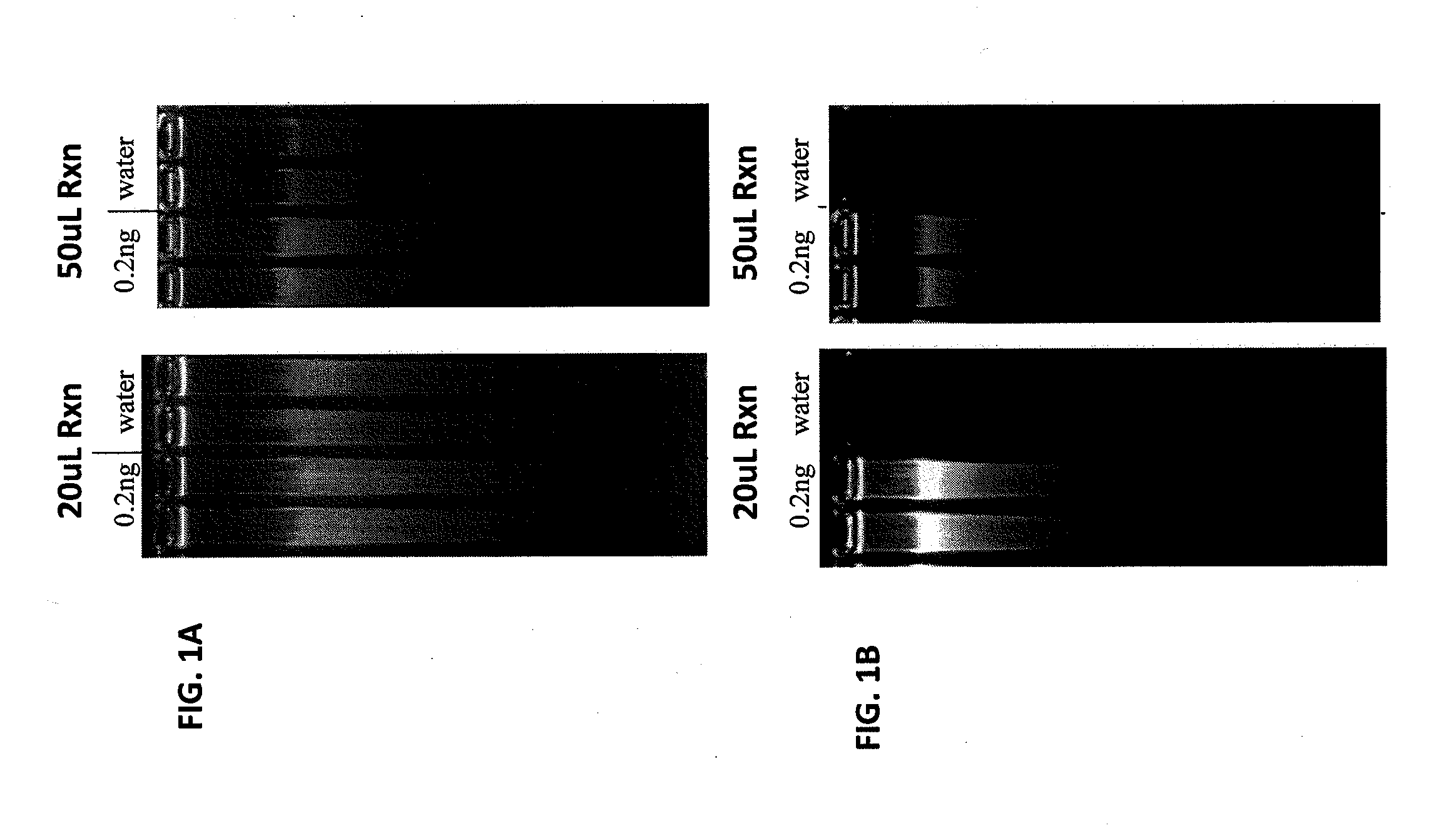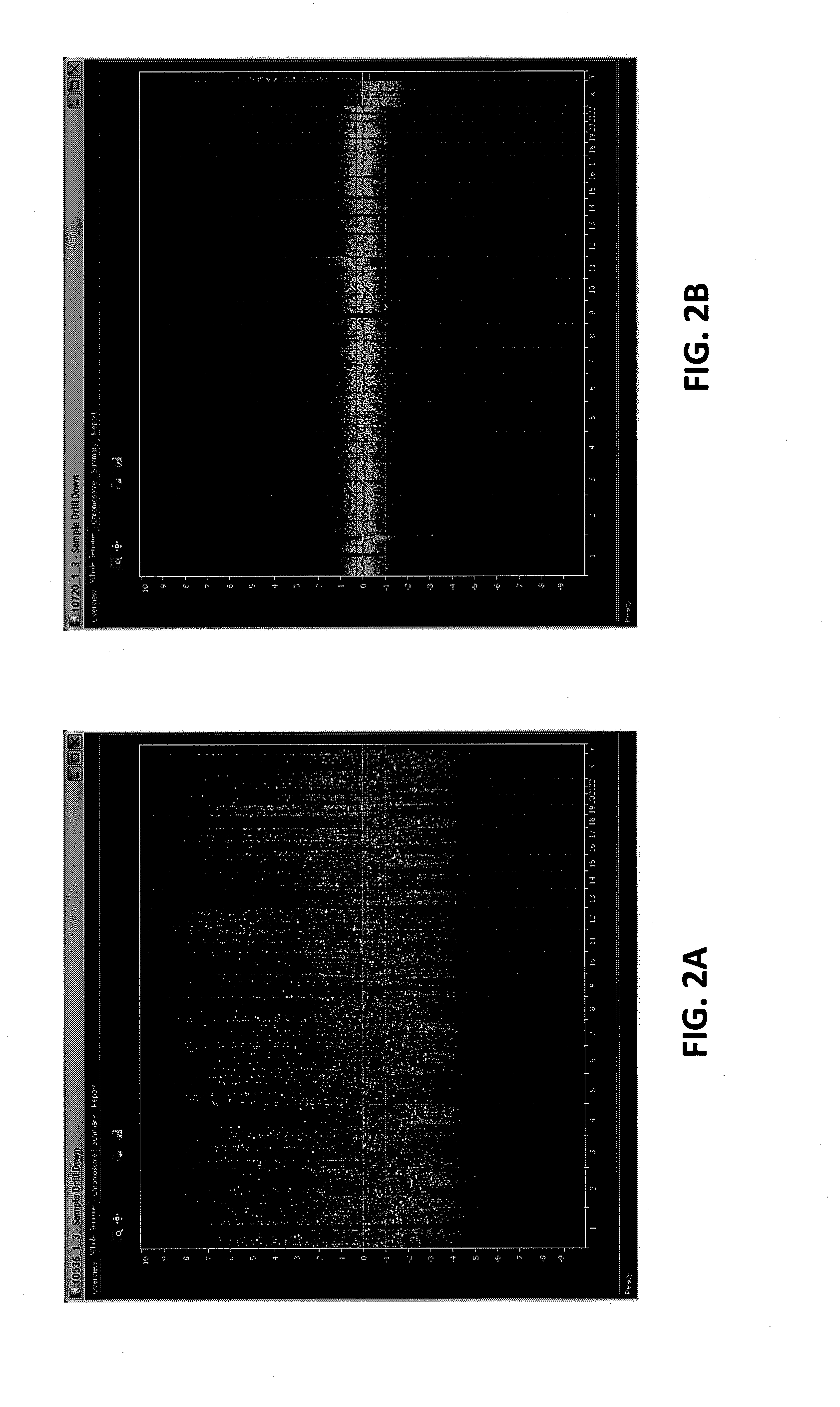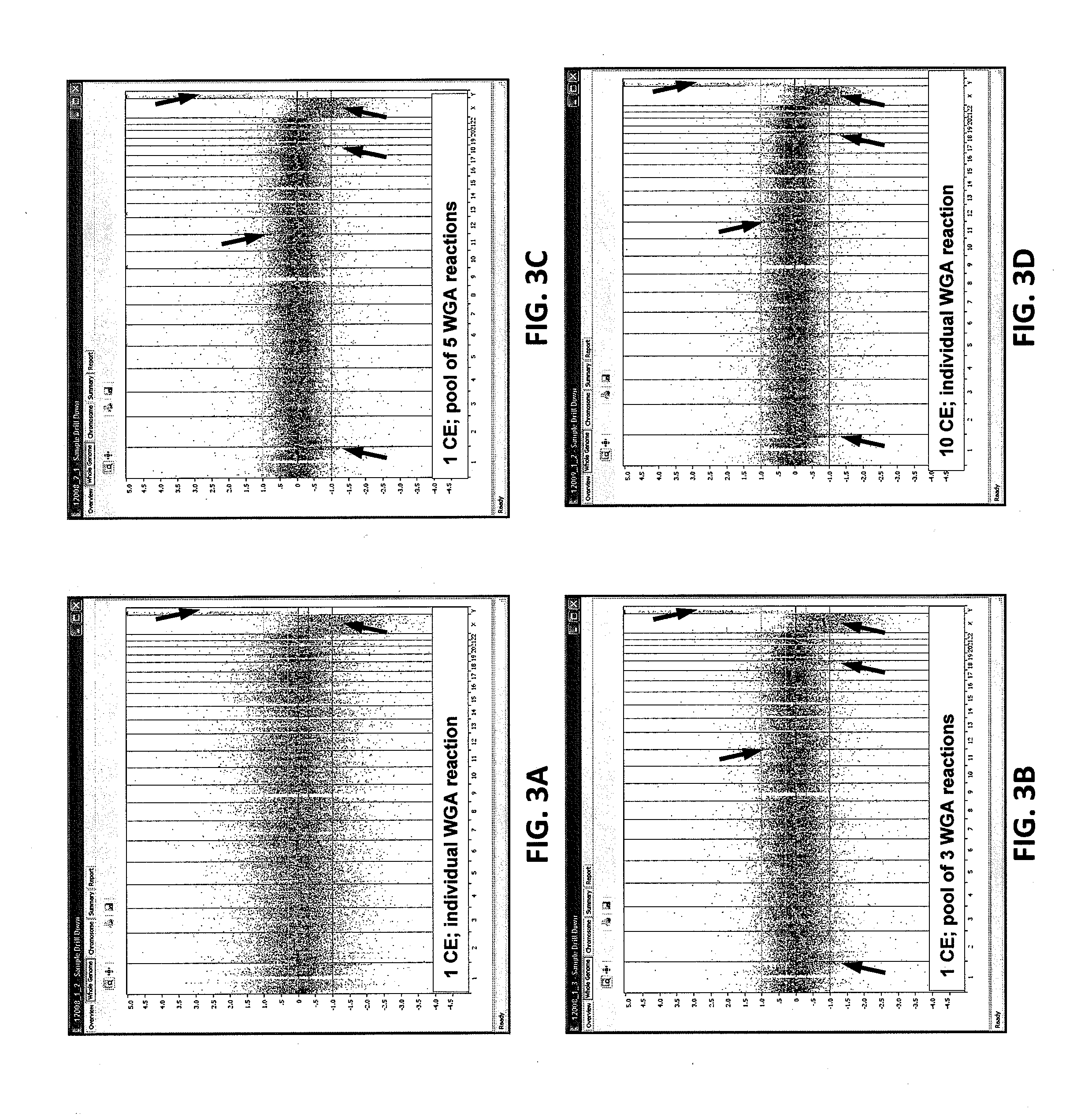Methods and compositions for isothermal whole genome amplification
a technology of whole genome and composition, applied in the field of methods and compositions for isothermal whole genome amplification, can solve the problems of high allele dropout rate, unsatisfactory results, and low locus dropout ra
- Summary
- Abstract
- Description
- Claims
- Application Information
AI Technical Summary
Benefits of technology
Problems solved by technology
Method used
Image
Examples
example 1
Decreased Template-Independent Polymerization in Whole Genome Amplification
[0088]The effect of modified primers on template-independent polymerization in WGA was examined as follows. Approximately 0.2 ng of female genomic DNA (224.9 ng / uL) (Promega; Madison, Wis.) was combined with either standard random nonamer primers or modified random nonamer primers in Tris (pH 7.5) and KCl buffer in 10 uL or 25 uL final volumes. A primer annealing reaction was carried out by heating the mixtures for 3 minutes at 95° C. and then snap cooling on ice for 5 minutes. Following cooling, either 10 uL or 25 uL of a WGA mix (consisting of phi29; 2× supplied phi29 reaction buffer; dNTPs (New England Biolabs, Ipswich, Mass.); BSA (Promega, Madison, Wis.); and Yeast Inorganic Pyrophosphatase (New England Biolabs, MA)) was added to the DNA / primer mixture and incubated for 4 hours at 30° C., followed by a heat inactivation step at 65° C. for 10 minutes.
[0089]Following heat inactivation, 10 uL of each WGA re...
example 2
Improved Whole Genome Amplified Genomic Material by Array Comparative Genomic Hybridization
[0092]Array comparative genomic hybridization (aCGH) is a technique that allows for the detection of DNA sequence copy number aberrations throughout the genome (e.g., chromosomal imbalance, aneuploidy). aCGH can also be used to evaluate the efficacy of a WGA method. Accordingly, aCGH analysis was used to evaluate the efficacy of the WGA methods in embodiments of the present invention compared to standard WGA methods as follows.
[0093]As a reference, aCGH analysis was performed on DNA produced according to standard WGA techniques. Briefly, ten cells from two cell lines, AG09802 and GM10175 (Coriell Institute for Medical Research; Camden, N.J.), were dispensed independently into separate wells on a 384-well plate and incubated with a standard lysis buffer (Lysis Solution; Applied Biosciences, Foster City, Calif.) at room temperature for 3 minutes. Following lysis, a standard neutralization buffer...
example 3
Pooling WGA Products Normalizes the Effects of Random Events
[0099]Random events, such as genomic template damage, random priming bias, and allele and locus dropout, do not occur equally in WGA reactions. Accordingly, the effect of pooling WGA products produced by the methods and compositions in embodiments of the present invention was examined as follows.
[0100]Ten cells or one cell of each of two cell lines, GM10239 and GM11962 (Coriell Institute for Medical Research, Camden, N.J.), were dispensed independently into separate wells of a 384-well plate and incubated with a lysis buffer (Lysis Solution, Applied Biosciences, Foster City, Calif.) at room temperature for 3 minutes. Following cell lysis, a phosphate-based neutralization buffer in embodiments of the invention was added to each well for 3 minutes. After a one minute 95° C. denaturation step, a first isothermal WGA was carried out using phi29 polymerase (Enzymatics, Beverly, Mass.) and modified random nonamer primers (Integra...
PUM
| Property | Measurement | Unit |
|---|---|---|
| Temperature | aaaaa | aaaaa |
| Temperature | aaaaa | aaaaa |
| Fraction | aaaaa | aaaaa |
Abstract
Description
Claims
Application Information
 Login to View More
Login to View More - R&D
- Intellectual Property
- Life Sciences
- Materials
- Tech Scout
- Unparalleled Data Quality
- Higher Quality Content
- 60% Fewer Hallucinations
Browse by: Latest US Patents, China's latest patents, Technical Efficacy Thesaurus, Application Domain, Technology Topic, Popular Technical Reports.
© 2025 PatSnap. All rights reserved.Legal|Privacy policy|Modern Slavery Act Transparency Statement|Sitemap|About US| Contact US: help@patsnap.com



